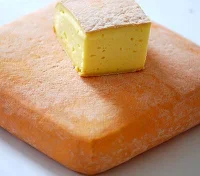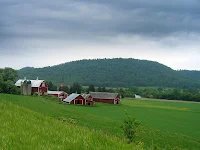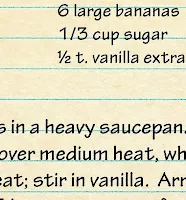For true cheese lovers, the discovery of little out of the way farms that produce quality local cheese is a fun way to fill up a weekend this summer. Many of the top producing cheese states have cheese trails, much the same way that they do in Europe. You all know yourselves and I'm pretty confident in my assessment that if
 you are here reading this, you would likely take a cheese trail trip. Come on, admit it. It's okay. Well, here's two for you to check out; Vermont and Wisconsin. If you are really serious about finding great artisinal cheese-makers in the United States, check out this guide by Clark Wolf.
you are here reading this, you would likely take a cheese trail trip. Come on, admit it. It's okay. Well, here's two for you to check out; Vermont and Wisconsin. If you are really serious about finding great artisinal cheese-makers in the United States, check out this guide by Clark Wolf.Many of you, are active, always out and about on the weekends. If you are not, you should be. When you're done perusing the cheeses here, shut down the computer, pick up some fresh bread, your favorite beverage, try some new cheeses. Then ring up some friends. Pour, eat, enjoy. After all, that is the point
 of all this; 'education leads to interaction.' It's only in the doing, whether cooking, eating, or just spending time with friends, that the true human spirit is sated....
of all this; 'education leads to interaction.' It's only in the doing, whether cooking, eating, or just spending time with friends, that the true human spirit is sated....Mmmm.....'the power of cheese'........
The Cheeses
 Maytag Dairy, Maytag Blue, Iowa
Maytag Dairy, Maytag Blue, IowaNestled in among the rolling hills of central Iowa is Maytag Dairy, which produces Maytag Blue cheese. Shortly before World War II, F.L. Maytag II began working with scientists at Iowa State University to begin making a great American blue cheese, modeled after those of Europe. The result was one of the first American farmstead cheeses of superior quality. Maytag cheese makers, however, are still hand making the same cheese that they created in the 1930's. Maytag Blue's popularity has taken off with the growing interest in American farmstead cheeses, and this wonderful, tangy blue cheese is now featured on menus across the country. Its wonderful flavor, moist yet crumbly texture, and lemony finish make Maytag one of the world's great blue cheeses.
 Barely Buzzed, Beehive Dairy, Utah
Barely Buzzed, Beehive Dairy, UtahBarely Buzzed is produced by Tim Welsh and Pat Ford at the Beehive Dairy in Utah, one of the few dairy farms in that state. This rind of this cheese is rubbed with a blend of espresso and lavender, and the flavors permeate gracefully to the core of the cheese as it ages. The Barely Buzzed won a Blue Ribbon at the American Cheese Society in 2008 and again in 2009.
Belford, James Ranch, Colorado
Belford is the signature cheese of the Becca and Dan James of the James Ranch. Sold as both a young and mature form, it is similar to an aged gouda but has some cheddar ? like qualities. It is very creamy and has a lovely tang. Belford is a delicious table cheese and goes especially well with apples and pears. Belford (particularly the younger) melts well and is delicious in recipes.
Catskill, Stissing Mountain, New York
A beautiful goat cake from Stissing Mountain in Upstate New York. Refreshing and mild, it will please young children's palates as well as everyone in the family. Under its bloomy rind it will age well for several weeks. In the process it will develop a more mushroomy aroma and will become a little more goat. The goats begin to kid in the Spring and milk for cheese-making is available late into the year.
 Chocolate Capri, Westfield Farm, Massachusetts
Chocolate Capri, Westfield Farm, MassachusettsWestfield Farm has been handcrafting award-winning farmstead cheeses in Hubbardston, Massachusetts since 1971. Located on 20 acres in the central part of the state, the farm turns out a little over 900 pounds of cheese per week. Cheese-maker Dave Cass is very proud of Westfield's many national awards, including Best of Show at the American Cheese Society's 1996 annual convention. If the notion of a semi-sweet chocolate goat cheese appeals to you, you will positively fall in love with this creation from Westfield Farm. Rich and creamy with a slightly goaty tang, be forewarned, these five ounce logs are addictive. Chocolate Capri took 1st Place at the 2003 American Cheese Society Awards in the Flavored Goat Cheese category.king farmstead gouda in the Dutch tradition is part of Frisian Farms? heritage and commitment to its Dutch ancestry. Frisian Farms is located just outside Pella, Iowa, which has a national reputation as being a ?touch of Holland.? Pella is a predominantly Dutch community that has retained strong ties to its ancestry by preserving Dutch culture through its food, shops, crafts and architecture including traditional windmills and a historical village. Each year the town celebrates its Dutch heritage with a three day tulip festival that draws over 200,000 visitors who come to enjoy the tulips, food, Dutch dancing, parades and crafts.
 Frisian Farmstead Mature Gouda, Iowa
Frisian Farmstead Mature Gouda, IowaA washed-rind cow's milk farmstead cheese that is nutty and sweet with a hint of fruitiness. When young, its texture is firm but creamy. As it matures, Frisian Farmstead Gouda develops mellow notes of butterscotch and honey, turns a deep amber color and becomes firm and crumbly in texture. This farmstead cheese is complex but retains a rustic essence that makes it widely appealing to both cheese novices and connoisseurs.
 Fleur-de-Teche Fromage Triple Cream with Vegetable Ash, Bittersweet Plantation Dairy, Louisiana
Fleur-de-Teche Fromage Triple Cream with Vegetable Ash, Bittersweet Plantation Dairy, LouisianaAccording to Chetimaches Indian legend, Louisiana's Bayou Teche was formed when a snake, miles in length, battled with the tribe. The snake was killed in the battle and as its great body broadened and curved, it sunk into the damp mud of the swampland. Later, as water flowed through this channel, Bayou Teche was formed. Fleur-de-Teche, a triple cream cow's milk cheese, honors this legend. The vegetable ash "snakes" through the buttery, creamy interior of this soft rind.
 Grayson by Meadow Creek, Virginia
Grayson by Meadow Creek, Virginia Virginia's Feete family uses ecologically-sound farming practices in raising their dairy herd of Jersey cows: no pesticides or herbicides are used in the fields where the cows are rotationally pastured; the cows are never confined or fed silage, and are given minimal hormones and antibiotics; and the milking season ends when grass growth wanes and the cows wind down their milk production. The quality of the cheese reflects this diligence. Grayson is Meadow Creek Dairy's washed rind offering: the brownish-orange rind of the mildly pungent four-pound square envelopes a supple, semi-soft paste that tastes rich and beefy with sweet, nutty tones. 2008 American Cheese Society Winner: 1st in category.
 Great Hill Blue, Great Hill Dairy, Massachusetts
Great Hill Blue, Great Hill Dairy, MassachusettsLocated on the shores of Buzzard's Bay, 50 miles south of Boston, Great Hill Dairy in Marion, Massachusetts has been known for its outstanding herd of Guernsey cows, as well as for its prize-winning Acacia and Orchid collections. Great Hill produces a unique tasting blue cheese in its turn-of-the-century barn. Great Hill Blue is an internally ripened variety made with raw, um-homogenized milk, resulting in a full-flavored, smooth tasting cheese. The cheese has a rather dense and yellow curd, as no bleach or food colorings are added. Its texture is crumbly and slightly drier than Roquefort or Gorgonzola.
 Hooligan, Cato Corner Farms, Connecticut
Hooligan, Cato Corner Farms, ConnecticutAn American washed-rind cheese from Colchester, Connecticut's Cato Corner Farms. With their herd of 30 grass-fed Jersey and Brown Swiss cows, Cato Corner specializes in making washed rind, raw milk cheeses. Cheesemaker Mark Gillman has worked with French and Belgian cheesemakers to develop his distinctive line of farmhouse cheeses - Hooligan, a raw cow's milk cheese aged over 60 days in an underground cave, is made from cooked curds and molded in a small basket. As the wheels age, they are washed in buttermilk, encouraging the growth of bright orange b.linens bacteria that give Hooligan its characteristic color, flavor, and aroma. Although boasting a strong aroma, Hooligan has a relatively mild washed-rind flavor and sweet finish.
 Kunik, Nettle Meadow Goat Farm, New York
Kunik, Nettle Meadow Goat Farm, New YorkA unique and decadent cheese made from goat's milk and Jersey Cow's milk cream at Nettle Meadow Goat Farm in Thurman, New York. Nettle Meadow is a 50 acre, 100 goat farm in the Southern Adirondacks; its Kunik is a wheel of triple creme with a bloomy, white rind and tangy, buttery flavor.
 O'Banon, Judith Schad, Capriole, Indiana
O'Banon, Judith Schad, Capriole, IndianaWrapped in chestnut leaves marinated in Woodford Reserve Bourbon, it is a beautiful signature to any cheese tray. Its light, tannic and mineral flavors improve with age, and pair especially well with dry champagnes. An old cheese with a new name, it is larger and fresher than the French version, giving it a lighter, palate cleansing edge. Traditionally, the chestnut leaves used to wrap the cheese were soaked in eau de vie. They now use Woodford Reserve Bourbon. The tannins in the leaves and the bourbon combine to give this creamy, dense cheese just a nuance of a kick! At 2 months old it's better than at 2 weeks. 2001, 2004, 2007, and 2008 ACS Award Winner.
 Queso Oaxaca, Paula Lambert, Texas
Queso Oaxaca, Paula Lambert, TexasPaula Lambert is a renowned cheese-maker and entrepreneur. In 1982 she founded the award-winning Mozzarella Company, a small cheese factory in Dallas. Today, the company produces some of the best Hispanic-influenced cheeses this side of the border. Inspired by the fabulous cheese from the beautiful Mexican state of Oaxaca, this cheese is also the base for the classic Mexican dish Queso Fondido, a Central American twist on fondue. Sliver medal winner at the 2002 American Cheese Society Awards.
S
 ilver Falls Creamery, Rosemary & Peppercorn with Olive Oil, Oregon
ilver Falls Creamery, Rosemary & Peppercorn with Olive Oil, OregonShawn Hanowell and Hanohaven Farms located in the Willamette Valley, not far from Silver Creek Falls, Silver Falls Creamery provides the highest grade goats? milk for their award-winning artisan cheeses a result of the combination of well managed goats, a pristine environment and expert craftsmanship. For the 23rd year, the American Cheese Society has held the contest. The contest this year featured a record 941 entries ? nearly 200 more than any previous ACS competition ? from 157 producers representing 28 U.S. states and two Canadian provinces. With the award that Silver Falls Creamery earned, they are hoping to put Oregon on the map as one of the finest artisan and goat cheese producers in the nation. Another strong favorite, this cheese is perfect with steak and baked potatoes with a red wine. Try spreading it on your potato or French bread. This also goes well with lamb and wild game. American Dairy Goat Association October 2006 Cheese Competition Results Silver Falls Creamery 1st Place Fresh Unripened Goats Milk Cheese-Commercial.
Smokey Blue by Rogue Creamery, Oregon
In 2002, Ig (Ignazio "Ig" Vella, affectionately known as the Godfather of artisan cheese) hand selected Cary Bryant and David Gremmels as the new owners of what is now known as The Rogue Creamery. Of utmost importance was to carry on the tradition of hand-milled cheese. Bryant and Gremmels hit the ground running. Within a year, they were producing award-winning cheeses, "Oregon Blue" is a classic Roquefort style blue cheese that is cold smoked 16 hours with Oregon Hazelnut shells. The smoking process releases a sweet, creamy, smokey flavor that balances both the sharp blue flavor and sweet, creamy flavor of the 100% natural full cream sustainable milk from Bonanza View Dairy. Oregon's Rogue Creamery scored the coveted Best New Product in the World Award at the National Association for the Specialty Food Trade (NASFT) Food Show in New York (2005) and best product line (2006). Smokey Blue was also the winner of the of the Innovation Award - (2006 SIAL Paris, France. Made from unpasteurized cow's milk. Suitable for vegetarians.
Bon Appetit,
Lou
Sources: Rogue Creamery, Oregon Smokey Blue by Rogue Creamery, Oregon Queso Oaxaca, Paula Lambert, Texas O'Banon, Judith Schad, Capriole, Indiana Kunik, Nettle Meadow Goat Farm, New York Hooligan, Cato Corner Farms, Connecticut Great Hill Blue, Great Hill Dairy, Massachusetts Grayson by Meadow Creek, Virginia Bittersweet Plantation Dairy, Louisiana Frisian Farmstead Mature Gouda, Iowa Westfield Farm, Massachusetts James Ranch, Colorado Beehive Dairy, Utah Maytag Dairy, Iowa


















.jpg)





















